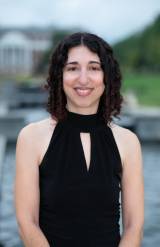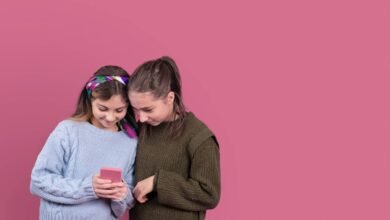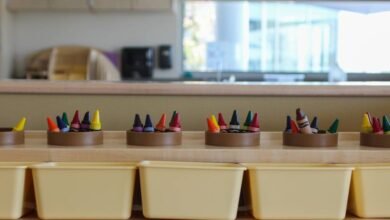7 Strategies to ignite active learning – and help students see its benefits

To get started on the active learning journey, I share below a list of seven strategies and the benefits of each one to share with students. That way, each time we try one of the tools in practice, students will understand how this approach supports their growth with a clear explanation of the “why” behind each activity.
The Big Question
Midway through sharing new information, the teacher pauses and asks students to write down an area of confusion so far. Then, students either post their questions on the wall and respond in writing or hand them to the teacher to share with the group anonymously.
- Clears up confusion
- Encourages a culture of welcoming mistakes and misconceptions
- Normalizes not knowing and asking questions
- Allows students to communicate in a variety of modalities
- Gives everyone a voice
Connection, Prediction
Before starting a daily objective, students pose a question or idea that makes a connection to prior learning. Then, they develop a prediction about what they are about to learn and share their thoughts with classmates via pairings or small groups.
- Encourages the use of higher-order, critical thinking skills
- Provides an avenue for students to share at low risk (i.e., in smaller groups) rather than in front of the class
- Allows the teacher to see how students make meaning of the daily objective in front of them
Question Everything
For a specific timeframe within the class period, students are asked to phrase any response to a question in a shared space (an online document, chart paper, board, etc.) as an open-ended question. Then, students answer the question by posing yet another question of their own in the same space.
- Engages students in critical questioning
- All participants have a chance to respond to one another in an accessible space
- The teacher can be on the lookout for misconceptions and adjust instruction accordingly
Images and Inspiration
Using a visual image (a photograph, drawing or similar), the teacher asks students to “free write” for a short period of time about what the image inspires. Depending on the course subject, students could write their conjectures about what they see or engage in a more creative approach.
- Allows students to make their own meaning of an image before the teacher directs learning more specifically toward the daily lesson
- Encourages students to learn in a different way (i.e. visually)
- Helps to facilitate a more inductive approach to course content
One Sentence
For an upcoming extended writing project that may be intimidating, ask students to write just one sentence from the assigned prompt. Then, put them in small groups to examine one another’s sentences and discuss the challenges they face.
- Embraces the concept that all learners struggle, and that collaboration is key to surmounting obstacles
- Teaches students with multiple points of view to help one another
- Breaks a formidable task into more manageable chunks
Rephrase, Please!
Sometimes, ideas get lost in translation. In this activity, students are asked to take the key ideas taught during direct instruction and phrase them in their own words. They can then post their phrases on a wall, share in groups, or be called upon randomly.
- Helps students make meaning of new concepts in their own heads
- Acts as a check for understanding for the teacher to see where struggles might still exist
- Empowers students to think critically about the salient ideas presented
Stump the Teacher
Students form groups and create a series of quiz questions on course content. Then, groups take turns posing questions in an attempt to stump the teacher. If the teacher cannot answer enough questions correctly, the class wins!
- This gamification technique increases student engagement
- Teachers provide students with the opportunity to engage in a role reversal
- By creating the quizzes, students learn material more actively
Active learning is dependent upon the act of critical thinking. With the strategies and accompanying rationale provided above, teachers working with multiple grade levels in a variety of content areas can find at least a few approaches that work to increase the involvement of everyone in the room.
Tempting though it might be to rely on vocal students to carry student discourse each day past the point of awkwardness and toward whatever a teacher might wish to highlight, resisting that urge is key to ensuring that every child in the room is an active learner. Even the loudest students in the room who verbally process information may be more passive than we suppose. So, finding more effective ways to involve all students in each day’s learning is an effort that is well worth the time. That way, when a teacher leaves the classroom thinking, “Wow. They were really with me today,” that thought will apply to not just the few students who always like to talk — it will also accurately represent the experience of the entire class.
 Miriam Plotinsky is an instructional specialist with Montgomery County Public Schools in Maryland, where she has taught and led for more than twenty years. She is the author of three books for educators: Teach More, Hover Less: How to Stop Micromanaging Your Secondary Classrooms, Lead Like a Teacher: How to Elevate Expertise in Your School, and Writing Their Future Selves: Instructional Strategies to Affirm Student Identity. Also a National Board Certified Teacher and certified administrator, she lives in Silver Spring, Maryland.
Miriam Plotinsky is an instructional specialist with Montgomery County Public Schools in Maryland, where she has taught and led for more than twenty years. She is the author of three books for educators: Teach More, Hover Less: How to Stop Micromanaging Your Secondary Classrooms, Lead Like a Teacher: How to Elevate Expertise in Your School, and Writing Their Future Selves: Instructional Strategies to Affirm Student Identity. Also a National Board Certified Teacher and certified administrator, she lives in Silver Spring, Maryland.
Episode transcript
This is a computer-generated transcript. While our team has reviewed it, there may be errors.
Kara Newhouse: Welcome to the MindShift podcast, where we explore the future of learning and how we raise our kids. I’m Kara Newhouse. Today we’re talking with Miriam Plotinsky, an instructional coach, former high school English teacher and the author of several books. Her newest book, Writing Their Future Selves, is about nurturing students’ academic identities in uncertain times. So what is academic identity?
Simply put, it’s a student’s sense of themselves as a learner, scholar and thinker. In Writing Their Future Selves, Plotinsky conveys a deep belief in every student’s ability to succeed in school. But she also writes that it takes more than belief to help students cultivate a strong academic identity. It takes concrete changes to classroom instruction.
Miriam Plotinsky, Welcome to MindShift.
Miriam Plotinsky: Thank you, Kara. I’m very happy to be here.
Kara Newhouse: Your first book, Teach more, Hover Less, was about helping teachers stop micromanaging their classrooms. Can you explain what helicopter teaching is and how you spot it?
Miriam Plotinsky: So it could look like what you would expect it to look like, which would be a teacher literally hovering. However, to me, a lot of the time it means that we have too much teacher talk. So you walk into a classroom and the teacher is running the show the entire time, every single day, day in, day out, and not really giving kids a chance to speak or share or take any kind of control over the learning. And, you know, I I’ve been in classrooms quite frequently where a teacher will be reading out loud to students for an entire class period out of a book. And that’s because there is an underlying fear that if they stop doing that and teach a different way, a more risky way, perhaps that everything will suddenly veer out of their control. Or that kids will stop focusing. And the truth is, if you sort of look around in classrooms where teachers think that they’re keeping a lid on things, the opposite is happening. So whether it’s, you know, very visible signs of disengagement or a kid just sort of politely spacing out, although these days we have the phones. So that’s a whole different look. You know, you’re not going to have them that way. It’s just not going to work. So strangely, helicopter teaching doesn’t have to be about you constantly standing over kids, although it can be, you know, moving from kid to kid and playing sort of a classroom game of whack a mole as well in terms of keeping kids on task when they’re doing something more independently. So it can also look like that. But generally speaking, it’s just this deep seated belief that you have to manage every single thing, which of course, becomes so exhausting.
Kara Newhouse: And you said you’ve taught this way for the first decade of your career.
Miriam Plotinsky: Yeah.
Kara Newhouse: It was a creative writing class that challenged you to change. What was it about that class that made you rethink your practice?
Miriam Plotinsky: Essentially what happened was I would assign a project that I thought was really great and they would say, you know, could we do this a different way? And in their case, the different way wasn’t drawing or doing a podcast or whatever it is they wanted to do. It was writing in a different way. Or sometimes it was – and this happened more often than you would think – “I’m working on my novel,” which I thought was so awesome because when I was 15 or 16, I was definitely not working on a novel. And instead of doing your project, can I write more chapters of my novel?
And, you know, my instinct at first was to say no. And then I started really thinking about it, and I was like, why am I saying no to them? They want to write things and I’m shutting them down. And so I just decided to give myself, essentially, I decided to just test myself a little bit. And unless their suggestions were completely crazy. I was going to say yes. And what I noticed was this increase in engagement and enthusiasm. And also they wrote more.
So it really made me rethink that piece of it. And then I started to think, okay, well, I can’t obviously say to students in, you know, my English 10th grade, 11th grade, 12th grade, whatever class that they can do whatever they want. However, what I can do is just be more open to having them write things a different way when when I can do that and sort of say, okay, well, we’re working on this particular skill, how would you like to present that? And sometimes when I just asked kids for ideas of how they wanted to write something. You know, how long do you want to be? What elements do you want to include? What kinds of examples? And I wouldn’t do this all the time, but I would do it intermittently. That gave them more choice in that respect too. And they were more involved.
Kara Newhouse: Yeah, how did it affect your students when you started doing more choice-driven activities in the regular classes?
Miriam Plotinsky: I think what happened was they did more and so I could do more to help them. The time where they were, you know, choosing, you know, if I had a day or two days a week where I’d say, okay, we have these three things that we have to do by the end of the week, you pick which one you’re going to do. We’re going to have three sections of the classroom, and one of those sections was always dedicated to me helping individual students with things, whether it was small group instruction, or giving kids feedback, or having conferences on what they were doing. And that gave me time to do things in class with them that I hadn’t been able to do and also to make me more aware of their work so that when I was in the evaluative phase of looking at what they had done, I was so much more informed that I had been before and I knew so much more about the kids in front of me. And so it made a difference for all of us.
Kara Newhouse: In all of your books, you write about things that you later realized weren’t great and you changed them. That kind of intellectual humility is rare, and it’s scary. How has it helped you as an educator to acknowledge those things that you didn’t get quite right?
Miriam Plotinsky: I really think that if we don’t admit that we could be doing things a better way, we are not going to stay in the profession. The only way to allay burnout and to make sure that we are getting better as teachers and to avoid the sort of complacency that I think becomes autopilot and then a gradual downward slide from good teaching to mediocre teaching is to really get uncomfortable and say, I don’t think that this is the best way that I could be doing this. Because, again, you know, there’s this sort of idea from teaching that is much more of a prior era that we’re there to be the focal point and we’re there to really just be this this pillar of knowledge. And then, you know, students will sit there and eagerly learn from us. And what I’ve realized over time is that I’m not the focal point, you know. I’m there actually to turn the light on in others so that they can be the focal point and it shouldn’t center around me. So I just try to find ways to redirect things as much as I can to give kids that that understanding that we’re all in this together.
Kara Newhouse: Miriam’s newest book Writing Their Future Selves, is all about showing kids that we ARE all in this together. We’ll get into that, right after this.
MIDROLL
Kara Newhouse: Miriam Plotinsky’s latest book, Writing Their Future Selves: Instructional Strategies to Affirm Student Identity, contains a wealth of tools for classroom teachers. They include journal prompts, discussion formats, and some of her favorite writing games.
Miriam Plotinsky: I had this tradition when I was teaching creative writing that Friday was called Fun Friday. And what that meant was that whatever projects we were working on or whatever we were doing, sort of in the longer term, we would put on pause on Friday to play some of these writing games. And so the one, and I believe I talk about this in the book too, and I invented it to a degree. It was inspired by a childhood book that I loved called The Magic Box. But the point of the book is that we have these magical empty spaces that we can fill with collective work. And so I took that idea and students would write a story idea on like a little slip of paper each kid individually, and they would take their story idea and put it into the magic box all folded up so that no one else could see it. And then they would draw one at random, and whatever story they pulled, they were going to try to write out the story. And, you know, sometimes there would be this whole, “Oh, do I have to do this one?” Because it could be challenging to get somebody else’s idea and try to write it on paper. But we did it. And then there was an option for sharing where either you could ask for the story idea that you wrote to be shared, or you could go ahead and share what you’d written. And then the person would say, “Oh, that was my idea.” But either way, you’re getting all of this richness out of it, because it might have been an idea that germinated in your brain, but you were seeing what somebody else could do with it. And it was always just really I mean, it could be gratifying, it could be funny, it could be a lot of things, but it was also just a lot of fun.
Kara Newhouse: It reminds me a little bit of elementary school writers workshop or even when I was in middle school, we had these like journals that we would do creative prompts just for like five minutes at the beginning of the class. But that stuff really seems to disappear in high school.
Miriam Plotinsky: It’s funny that you say that because we would have these conversations in my classes about how creative writing turned into this really serious and very often competitive thing, and the way that I saw creative writing in high school was that we needed to recapture or retain the joy of writing. Like that was goal number one, because kids who signed up to take that class were doing that because they express themselves through writing. That’s what they wanted to do. And so we had to create that sort of space where it really did have that feeling of community and that feeling of togetherness. And I used to call it a warm and fuzzy space, but that was really the intention behind it, because you can’t improve as a writer if you’re already not feeling that validation. It’s a lot harder.
Kara Newhouse: You also write that these games nurture a collective spirit of learning. Why does that matter?
Miriam Plotinsky: It builds a sense of empathy that we all feel this way. My book starts with a section that I call “the disclaimer,” and that section talks about how no matter how old we are or how seasoned we are as writers, we all have this thing that we do before we share something, which is to say, “Oh, you know, I’m really sorry, I was in a hurry” or “This isn’t as good as I usually would do.” But the idea is that when you’re creating that collective spirit of learning, you’re making people comfortable enough that they can transcend that feeling of insecurity and letting them know that this is a space where writing is nurtured and you’re there to grow and we’re not there to create finished products.
Kara Newhouse: Well, they may not be finished products, but feedback is always a part of writing and all kinds of assignments in school. And it’s one of the ways that teachers contribute to students’ academic identities. But it’s often given in ways that confuse students. How can teachers improve the process?
Miriam Plotinsky: So to me, in order to make the distinction of what feedback is really clear, we have to separate out from two other what we call response categories, which is how teachers respond to students. So we have feedback and we have guidance, which are like suggestions about your work. And then we have evaluation, which usually takes the form of a grade, but it’s a judgment. So feedback is a completely objective series of criteria that we give students or we’re commenting on the criteria about where they – where their work stood in relation to a goal. So, you know, I was teaching a PE teacher a few months ago who taught yoga and she was teaching the lunge and her criteria for success included, you know, your knee has to stay over your ankle and not move over your foot, because that’s going to cause you an injury. So she was she had a criteria for success for the performance of a lunge and watching how students did it. And so if her feedback was “your knee is moving forward,” that’s objective. But if she says “next time try shifting your weight backward a little bit,” that’s guidance, which is a suggestion. And the evaluation would be whatever grade she gave that. So just as long as we help students understand that feedback is not biased or personal because it’s based on that set of criteria and they can see we give them that criteria before they ever do the assignment. We make sure it stays with them. We make sure that we bring it back when we give the feedback, they’ll transparently see what it is they need to do and won’t be a mystery anymore. The problem is that when we don’t have that figured out ahead of time, we give students work and then we do this thing, especially in humanities, where we’re writing endless comments. We get really mad because kids don’t read the comments or they don’t change their behavior, but we haven’t given them a focused sense of what they did. And so we have to focus our feedback so they can understand the expectations.
Kara Newhouse: Right, and it’s it’s kind of easy to recognize how confusing those response categories in qualitative comments is unhelpful to, um, students who aren’t meeting the criteria as well. But it’s also not that helpful to students who are, I would imagine.
Miriam Plotinsky: It’s funny that you say that because I had a friend who showed me a paper that made him really angry. He got a paper back for a grad class and at the bottom it just said, “Well done. A.” So he’d done really well. But he didn’t know why he’d done really well. He didn’t know what he had to do next time to get the same result. He had no data, no information about his performance and that wasn’t feedback. That was a quick evaluative statement. And also, you know, as a student, you think “Did this person even read this?” So there’s also that doubt. You know, evenif you’re performing, as you would think would be ideal, it’s still not good for you not to get feedback. Everybody needs feedback. And also, no matter how well you do, we can all improve.
Kara Newhouse: You also recommend, for sake of improvement, that teachers seek regular feedback from their students, and you stressed that teachers should communicate with students about what feedback they end up using and what feedback they’re unable to use. How might they communicate those things?
Miriam Plotinsky: I think it’s important to be as transparent as possible about what it is you’re trying to do as a teacher. You know, I’ve had students come up to me several times over the years and ask to do something a different way. So, you know, “this is supposed to be a written assignment, but I want to do it as a visual because I’m a really strong visual artist.” And I have to think about as a teacher, if students are telling me we’d like to do this project a different way, can I accommodate that? Or is there a reason that I’ve chosen to do it in this way, in this modality? And if the the bottom line is that I’m trying to get kids to meet a specific standard that has them doing it in that way, I can’t change it. However, I need to tell them that. I need to say, “Hey, you told me you wanted to create this visually. Here’s why we can’t do that this time. However, I do want to make sure that that you’re heard and that you have a chance, an opportunity to show me your skill set in this area. So I’m going to make sure that there’s an assignment that comes up in the next week, two weeks, three weeks that gives you that flexibility. I just can’t do it this time, and here’s why.” So you just have to be very, very clear about where you’re coming from and what your responsibility is, because we have we have a curriculum usually, and we have things that we have to do, and we can’t just let that go.
Kara Newhouse: Why is it important to communicate that with students?
Miriam Plotinsky: Otherwise, everything you do seems arbitrary and they don’t really see. I mean, I hear students talking in schools and I hear my own kids talking to me about this, of, ‘Oh, you know, this teacher is just doing whatever they want and they don’t see that I have five other classes and we just have this this test today. And I don’t know why. This this teacher just loves giving tests.’ And that’s their perception. And my whole my whole thing with this is if you don’t tell someone the real story of what’s happening, they will make up their own. You know, a lot of times I think teachers assume that kids either don’t need to know or that they’re not interested or whatever it might be. But the truth is, they like to know more than we think.
Kara Newhouse: Miriam Plotinsky is an instructional coach in Montgomery County, Maryland. Her newest book is Writing Their Future Selves Instructional Strategies to Affirm Student Identity. Miriam Plotinsky, thank you for being with MindShift.
Miriam Plotinsky: Thanks for having me.
Kara Newhouse: The MindShift team includes Nimah Gobir, Ki Sung, Marlena Jackson-Retondo, and me, Kara Newhouse.
Our editor is Chris Hambrick. Seth Samuel is our sound designer.
Additional support from Jen Chien, Katie Sprenger, Cesar Saldaña and Holly Kernan.
MindShift is supported in part by the generosity of the William & Flora Hewlett Foundation and members of KQED.





